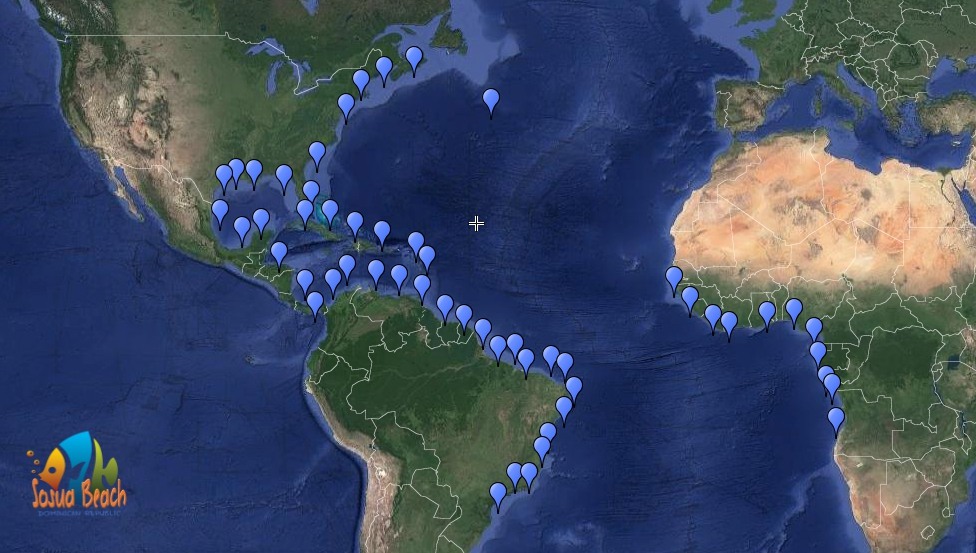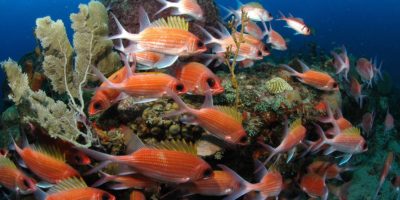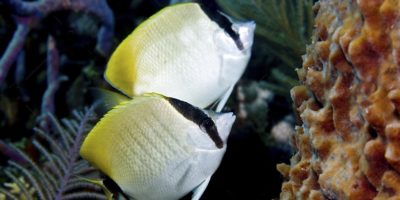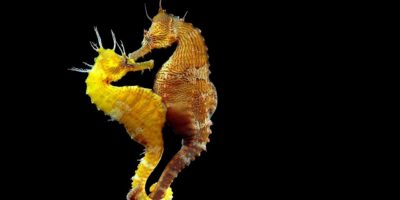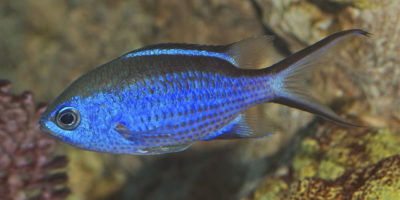Sergeant Major (Abudefduf saxatilis) is the most commonly seen fish in Sosua Beach and other snorkeling sites of the North Coast. The small, oval shaped reef fish is named from the military stripes they resemble, which are five black bars on its sides. When in sandy areas and over reefs, the fish is in the light phase, a more silvery gray color with a yellow sheen along its upper sides; and when hiding in a cave or crevice, it enters its dark phase, going darker blue. This fish belong to the Damselfish subfamily.
Photo Gallery
Range
The sergeant major range is worldwide in warm waters, including the Caribbean. In the Atlantic Ocean, the fish can be found from Rhode Island in the USA all the way down to Uruguay. It is abundant in Caribbean Sea reefs as well as around islands in the mid-Atlantic region. In the eastern Atlantic Ocean, its range includes Cape Verde, along the tropical coast of Western Africa, South to Angola.
Habitat
Sergeant major forms large feeding aggregations, of up to a few hundred individuals over shallow reef tops at depths of 3-50 feet ( 1-15 m ). When night approaches, the fish seek cover in crevices and caves within the reef. Juveniles are found in specific habitats, often schooling close to caves, shipwrecks, or other protective objects. They can also be found in floating sargassum communities.
Size & Weight
The maximum length of the sergeant major is approx. 9 inches ( 23 cm ) and the maximum weight is up to 0.45 pounds (0.2kg). Males reach maturity at lengths of 3.9 inches( 10cm ) and females at 3.1 inches (8 cm ).
On Video:
Food Habits
This species feeds on a variety of food items including small crustaceans, algae, invertebrate larvae, and fishes. Stomach content analysis showed benthic algae, pelagic algae, and plankton including copepods, shrimp larvae, fish, and pelagic tunicates.
Reproduction
The sergeant major spawning occurs on rocks, shipwrecks, reef outcroppings and pilings where the male prepares the nest. Courtship rituals includes males chasing the female during the morning hours. During spawning, approx. 200,000 eggs are released. The male takes on a bluish color while guarding the fertilized eggs. He guards them until they hatch, and it takes about 155 hours.
Sources:
- Lamar University – Sergeant-Major
- Fishbase – Sergeant Major fish
- Florida Museum – Abudefduf saxatilis








